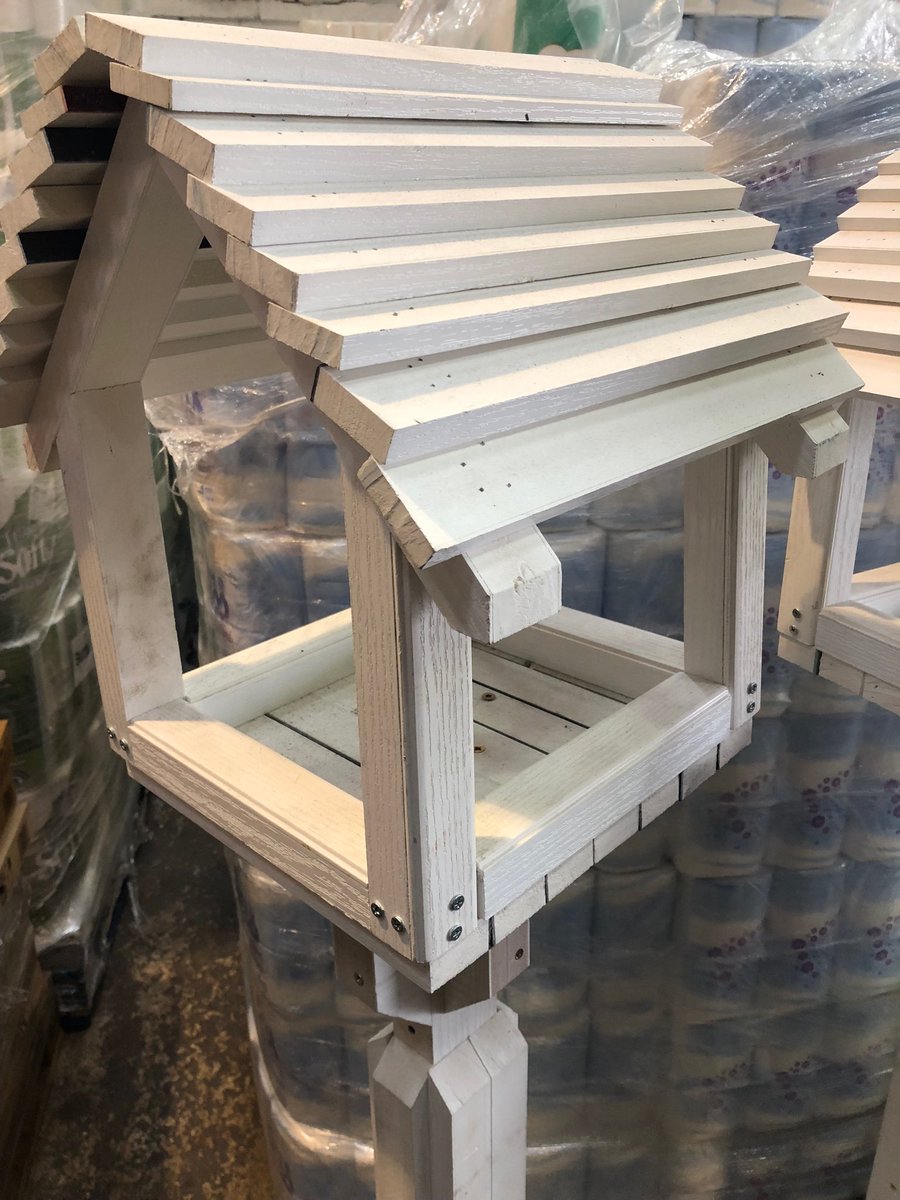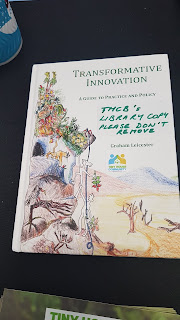Sunday, 25 November 2018
Sunday, 18 November 2018
Design method to reuse existing refugee camp tents and further insulate them from temperature / fire / projectiles at low cost by Paul Ridley of Cabinz / Reusitecture
Design method to reuse existing refugee camp tents and further insulate them from temperature / fire / projectiles at low cost by Paul Ridley of Cabinz / Reuseitecture Social Enterprise
Summary
Design to reuse existing refugee tents, 1. inflate supporting bladder or frame .2. cover in insulating layer of plastic filled plastic bottles & cans, 3.then encase in fire resistant foam or foamed cement and 4.extra optional external fabric layer 5.Then cover in soil / sand / debris
The strength / USP of the idea (if possible) is that a foam or foam / cement layer can be made to adhere to the outside of an existing fabric tent. If not, such a fabric will have to be used in future , so the idea works. Silicone water proofing may need to be removed
Alternatively, a 3d weave Geosynthetic fabric may be used on the outer skin with tubular / pocket structures.
Ref. 3d weaving Tubular fabrics Pocket Fabrics (Further research required)
Otherwise the spacer / around the bottles / foam could form a structural frame, along the lines of rebar in concrete, perhaps by being made with plastics recycled like Preciousplastic.com methods. Perhaps the use of bamboo could also be considered.
Alternatively, a 3d weave Geosynthetic fabric may be used on the outer skin with tubular / pocket structures.
Ref. 3d weaving Tubular fabrics Pocket Fabrics (Further research required)
Otherwise the spacer / around the bottles / foam could form a structural frame, along the lines of rebar in concrete, perhaps by being made with plastics recycled like Preciousplastic.com methods. Perhaps the use of bamboo could also be considered.
The tents or shelters like at http://www.reciproboo.org/ can be delivered / installed quickly, then this idea built up / improved as the empty bottles / cans/ cement / foam become available
Method
1. Inflate a supporting bladder inside tent with air or support with interior frame. This will stop the foam / cement seeping through the fabric
I presume this air tight bladder may have to made to fit the shape of each type of refugee tent. www.ConcreteCanvas.com use a similar bladder method in their shelters.
2. Cover in an insulating layer of used waste polystyrene / plastic filled plastic bottlesv(eco-bricks) , cans or UbuntuBlox. These will have varying levels of fire resistance, which will need to be considered in their use. This could reuse the packaging waste from the refugee camp / diaster area.
More insulative vacuum filled bottles could used if the technique is perfected (See Cabinz experiments)
More insulative vacuum filled bottles could used if the technique is perfected (See Cabinz experiments)
Perhaps if the structure is strong enough, the bottles could also be filled with local soil or water lower down to store thermal mass, built up in layers to take weight . The choice of bottle infill would be dictated by the environment
Note: this infill may need to be with spacers allow foam /cement to succesfully form a load bearing matrix around the infill. Perhaps these could be made by cutting up plastic bottles or making plastic extrusions locally via the www.preciousplastic.com extrusion / 3d printing methods .
Cabinz have previously experimented with used bottles / cans taped together with fibreglass reinforced packaing tape to form modules . We have also experimented with inserting these into metal drywall frames to form supporting beams
3. Then encase in foamed cement / concrete, so this forms an interlinked mesh structure around the bottles / cans
4. Although this may not be needed, perhaps, while cement layer is wet another layer of cement permeable fabric can be laid on top , so when dry it forms a stronger composite for harsher environments, with the 2 fabric layers.
Perhaps these 2 layers of fabric could be sewn together with a sewing awl or nuts / bolts around edges for extra strength before the foam / cement sets.
5. A more complex system has been considered, where plastic pipes between bottles in the composite would allow air, gas or water to be pumped in and out to cool refugee shelter during the day and heat it at night
Cabinz have considered a 3d layout of pet bottles for this , to be inserted into a 3d weave fabric , . see below .Bottles are placed end to end and he middle of another bottle with top & bottom cut of joins the 2 bottles together like a sleeve.
A plastic joining strip connect the neck of the bottles together
Hopefully this is not the case again here, and the feasibility / potential of this idea will be fully researched / funded & explored.
5. A more complex system has been considered, where plastic pipes between bottles in the composite would allow air, gas or water to be pumped in and out to cool refugee shelter during the day and heat it at night
Cabinz have considered a 3d layout of pet bottles for this , to be inserted into a 3d weave fabric , . see below .Bottles are placed end to end and he middle of another bottle with top & bottom cut of joins the 2 bottles together like a sleeve.
A plastic joining strip connect the neck of the bottles together
Note:
This design is an idea by Paul Ridley alone on the 18-11-18 so far without prototyping, and has been passed to potentially interested parties for comments, and put in the public domain on the cabinz blog / Twitter / Facebook
P Ridley has proposed ideas to improve Refugee Shelters before, which were mostly ignored, yet possibly may have proved correct .
This design is an idea by Paul Ridley alone on the 18-11-18 so far without prototyping, and has been passed to potentially interested parties for comments, and put in the public domain on the cabinz blog / Twitter / Facebook
P Ridley has proposed ideas to improve Refugee Shelters before, which were mostly ignored, yet possibly may have proved correct .
Thursday, 15 November 2018
Screw Sorting Therapy Pilot Aims to Expand with Large Autism Charity Discussions
Following Cabinz and Woodwork to Wellness' pilot project (see link below)
Idea for sorting a mixed bucket of screws into smaller pots as relaxation & therapy that can then be used for craft / DIY by community groups
On 14/11/18 Paul Ridley from Cabinz met with Terry Usher from Autism Together and Tony from Woodwork to Wellness (WTW)
Autism Together is a large 50 year old charity based in the Wirral and the North West UK
Methodology for sorting, and efforts to bring the screws to market were discussed, at a meeting in the Woodwork to Wellness site with Tony and helpful visiting (WTW) members.
Terry has taken approx. 60 kg of assorted screws (pics below) , bolts & fittings back to Autism Together to trial the best way of sorting and selling the screws.
If you are a Community group, small business, local builder or diy'er, looking for larger quantities of screws & fittings to use or donate / sell on . Please contact Cabinz via email at cabinznet@gmail.com
We hope to be delivering after xmas.
Edit: In December Cabinz visited Autism Togethers' Screw sorting work station & garden furniture manufacturing area . Ta for tour Terry.
Cabinz dropped off some more screws for sorting
Idea for sorting a mixed bucket of screws into smaller pots as relaxation & therapy that can then be used for craft / DIY by community groups
On 14/11/18 Paul Ridley from Cabinz met with Terry Usher from Autism Together and Tony from Woodwork to Wellness (WTW)
Autism Together is a large 50 year old charity based in the Wirral and the North West UK
Methodology for sorting, and efforts to bring the screws to market were discussed, at a meeting in the Woodwork to Wellness site with Tony and helpful visiting (WTW) members.
Terry has taken approx. 60 kg of assorted screws (pics below) , bolts & fittings back to Autism Together to trial the best way of sorting and selling the screws.
If you are a Community group, small business, local builder or diy'er, looking for larger quantities of screws & fittings to use or donate / sell on . Please contact Cabinz via email at cabinznet@gmail.com
We hope to be delivering after xmas.
Edit: In December Cabinz visited Autism Togethers' Screw sorting work station & garden furniture manufacturing area . Ta for tour Terry.
Cabinz dropped off some more screws for sorting
More fixing dropped off !
Tuesday, 13 November 2018
Subscribe to:
Comments (Atom)
Illustrations of Prototype of Hexayurt & Arched Shelters for Allotment members and gardens
NOTE - There is an error in this ones' roof as the imp sheets cannot curve. this will be corrected shortly

-
'Shelter and Hardware Bank Network' (SAHBN) Launch Press Release : 17/8/19 by Paul Ridley of Cabinz CIC Cabinz CIC announc...
-
Proposal to Create a Storage Solution to facilitate Reuse for Overfilled Garages in the UK, as an Alternative to Garden Rooms Introductio...
-
Idea for sorting a mixed bucket of screws into smaller pots as relaxation & therapy Cabinz are talking and delivering screws. bost, n...






























































































